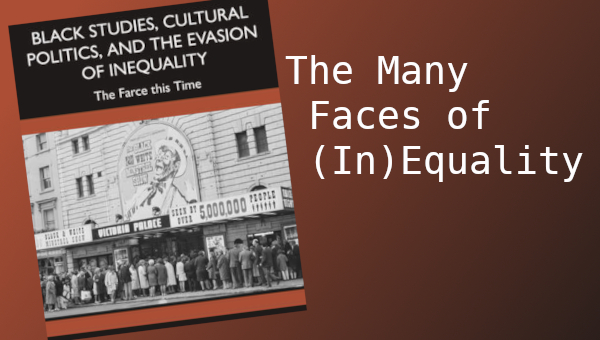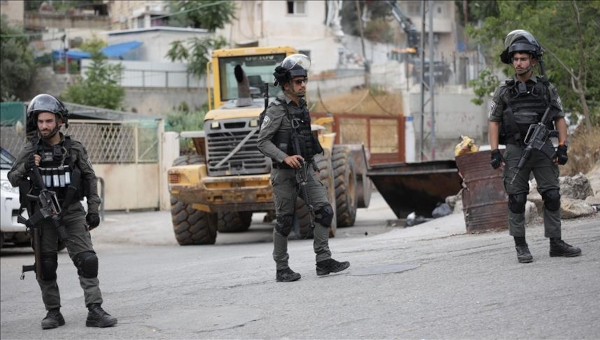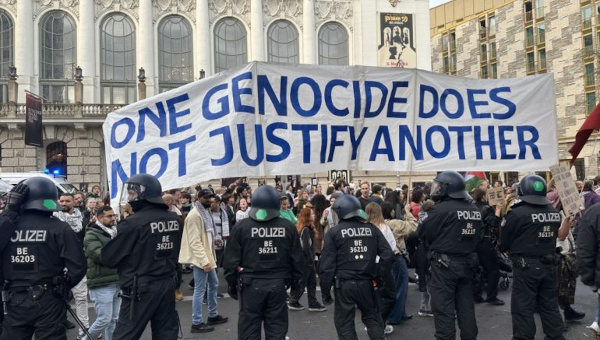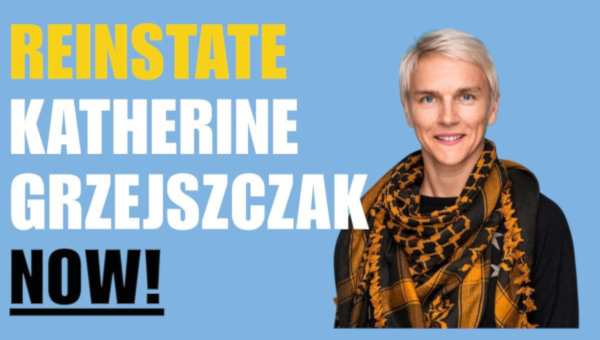Fifty Years Ago: The Birth of Black Power in Canada
January 29, 1969: Montreal students occupy computer lab to protest campus racism
January 29 this year marks half a century since Black students at Sir George Williams University in Montreal led a bold occupation of the campus computer centre. Their two-week action marked the dramatic arrival in Canada of Black Power, a term used to describe the militant mass struggle for Black freedom that shook the United States during the 1960s.
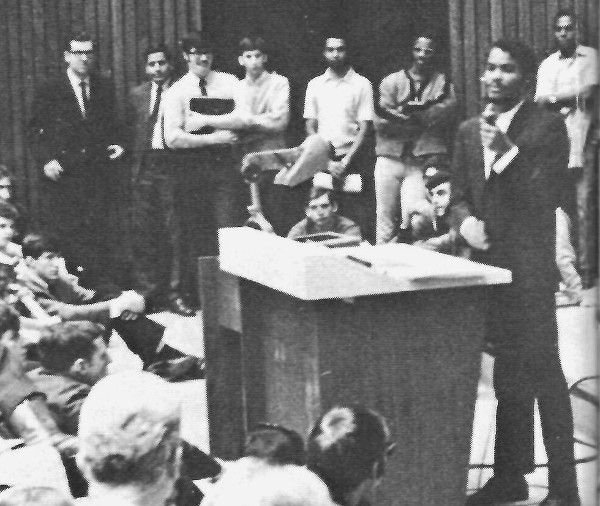
The occupation also triggered sharp government repression: a violent police assault on February 11 that broke up the occupation, causing an estimated $2-million in damages to the computer centre. Criminal charges were then laid against activists while an extended Canada-wide and international campaign mobilized in their defense.
‘For an Effective Share in Total Power’
Montreal-based historian David Austin describes the meaning of the Black Power movement in these words:
“The rise of Black Power gave expression to the conflict between masters and slaves, colonizers and colonized, oppressors and the oppressed, youth and tradition, and the struggle against dehumanization…
Black Power was not simply about Black visibility or having more Blacks in political office. It rejected institutional racial oppression and demanded ‘an effective share in the total power of the society’…”
Black power ushered in an era of heightened political consciousness in which Blacks asserted their rights to live a life of freedom.1
Austin’s aptly titled Fear of a Black Nation provides an authoritative account of the 1969 computer lab occupation crisis and its results.
A Heritage of Discrimination
Blacks were first brought to what is now Canada as slaves. Even after Britain’s abolition of chattel slavery in 1833, its legacy found expression in widespread racial segregation and discrimination.
Montreal’s small and inconspicuous Black population was multiplied many times over during the 1960s by the arrival of tens of thousands of newcomers, mainly from the Caribbean and the USA. This Black community remained at that time mainly English-speaking. It was a time of generalized popular upheaval in Quebec, mainly due to a tumultuous labour, nationalist, and radical upsurge by Quebec’s French-speaking majority, which then had few links to Blacks in Montreal.
Student occupations were common at that time in North America. Quebec college students had carried out a lengthy mass strike and occupation only a few months previously. Only a few days after the Sir George occupation ended, Montreal police violently dispersed a mass march for French-language rights at nearby McGill University (“McGill français”).
In terms of headlines, the clash at the computer centre was rivalled by a bomb that wrecked the Montreal Stock Exchange two days after the Sir George incident, wounding 27 people. It was the eighth such bomb blast in six weeks; the actions were attributed to pro-independence guerrillas.
Recent mass struggle in the U.S., Europe, and beyond echoed the radical mood sweeping Quebec. It was a heady moment of widespread and diverse global contestation.
Caribbean Impact
The most influential among the new Black arrivals were university students from the English-speaking Caribbean. Most of them attended Sir George Williams (now Concordia) University. They brought with them a spirit of revolt nurtured by independence struggles in Britain’s Caribbean colonies and a keen curiosity as to the history, theory, and practice of Black freedom struggles worldwide.
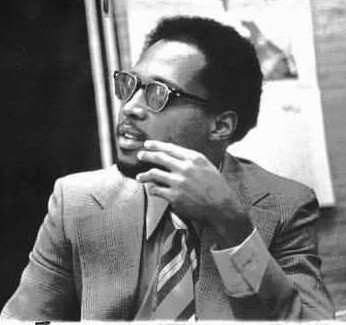
In 1965, a group of these students formed the Conference Committee on West Indian Affairs, later called the Caribbean Conference Committee (CCC), as a vehicle for their discussions. Among the founders were Anne Cools, Roosevelt (Rosie) Douglas, Franklyn Harvey, Antony Hill, Robert Hill, Alvin Johnson, Hugh O’Neile, and Alfie Roberts. They worked closely with well-known radical West Indian writers including George Lamming of Barbados, Lloyd Best of Trinidad, and C.L.R. James of Trinidad.
The CCC defined its purpose as follows:
“The West Indian has for over three centuries been seeking to make his own history. To know what that history has meant to our forebears and what it means to us today, what has been its defeats, triumphs, and manifestations – that is our responsibility at the present time.”2
James drew the CCC members into a long-remembered series of private classes on Marxism and liberation; Best and Lamming worked with them to assist in publication of New World Quarterly, a West Indian–based journal of political economy. The CCC held a series of conferences in Montreal, becoming a distinctive and influential voice of Black radical thought on a global scale.
Congress of Black Writers
David Austin explains that after 1967, this educational work was renewed, with organizers “shifting their gaze from the Caribbean to Canada, [and] turning their attention from Caribbean nationalism to ‘black consciousness.’”3 These efforts led to the organization of an international Congress of Black Writers, which took place at McGill University October 11-14, 1968. Dedicated to the martyred leaders Martin Luther King, Jr. and Malcolm X, the congress drew hundreds of participants to each day’s session. Among the guest speakers were Stokely Carmichael, Walter Rodney, and C.L.R. James.
The climax of the conference was the final keynote speech, given by Stokeley Carmichael. “The crowd rose to a fever pitch,” Austin tells us, as Carmichael “emphasized the importance of focusing on oppression as a system, proclaiming that ‘revolution is the total destruction of the old system – total destruction – the re-emplacement of a new system which speaks for the masses of the people of a given country.’”4
Dennis Forsythe, a conference participant from Jamaica and editor of a book on these events (Let the N—–s Burn), stresses the spiritual impact of the conference: it was “religious” in nature, with “deep symbolic connotations.” His description of the response to Rodney, whose celebrated book How Europe Underdeveloped Africa appeared only three years later, suggests a mood of joyous revelation:
“I can still remember seeing an African sister in tears as she listened to a re-evalution of her African homeland by Dr. Walter Rodney. Stunned by this new revolution, she sat in a motionless fixation, head slanted, eyes widely opened, body poised, totally absorbed in a type of sensational discovery – a joy that warranted tears. Others responded by clapping, cheering, shouting, tapping or by a quiet but absorbing repose.”5
None of the speakers were women, and only one – Rocky Jones from Nova Scotia – was born in Canada. Jones emphasized the need to build coalitions with indigenous peoples and francophone Quebeckers.6 There is no sign of such an organizational link during the subsequent Sir George occupation, although one participant reports that hundreds of francophones took part in support demonstrations outside the occupation site.
The writers’ congress welcomed participation by whites at its open plenary sessions, but workshops were held for Black participants only. Some speakers expressed exasperation with the inconsistency of whites who profess to support the Black movement but do not follow through with action. Walter Rodney remarked that “all whites were his enemies until they could prove otherwise.”
This remark “caused much reaction and uneasiness amongst whites,” remarks Forsythe. Yet this position “has been stated time and time again,” he points out. He provides several quotations that make reference to the example of John Brown, the white abolitionist who took up arms against slavery in the 1850s, including this from Malcolm X:
“If you are for me and my problem then you have to be willing to do as old John Brown did.”7
The book edited by Forsythe, published only a year after the computer occupation, contains nine insightful essays on the student occupation and related issues.
Opposing Racism in Canada
On the first day of the congress, David Austin relates, “News was broadcast that the custodians of a Nova Scotia cemetery had refused to allow the burial of a young Black girl. This incident drove home the fact that racial discrimination was alive and well in Canada.”8
Indignation at this incident helped direct the conference discussions toward an emphasis on anti-racist action on behalf of all Blacks in Canada as elsewhere. As the congress organizers explained, “In the congress, Black people will begin to rediscover themselves as the active creators, rather than the passive sufferers of history’s events.”9
Conference participant LeRoi Butcher later recalled that the event challenged all present to “purge themselves of their colonial past and begin to view the future in terms of revolution as a solution to the problem of colonialism.”10
The conference’s overall impact, Forsythe says, was to arouse “a feeling of exhilaration and uplift; we had been christened in the holy cause…. We were sanctified as the makers of our own destiny.”11
Alfie Roberts, long a prominent spokesperson for Black radicalism in Montreal, called the conference “a social thunderclap” that “announced loud and clear to the whole society that Black people were here.”
The conference’s impact was soon reflected in a rapid sequence of Black mobilizations: in defense of Rodney, a Guyana-born university teacher, abruptly expelled from Jamaica; in defense of Black Panther leader Eldridge Cleaver who faced charges arising from a clash with Oakland police; through a broadly supported meeting in Halifax to defend the local Black population.
It was expressed above all through the Hemispheric Conference to End the Vietnam War, a Montreal event in late November 1968 that united 2,000 activists in knitting together themes of the Black Writers’ Conference with the impulses of Cuba, the recently martyred Che Guevara, the heroic resistance of Vietnamese people, and popular struggles across the hemisphere – all as part of a call for global solidarity.12
A Charge of Academic Racism
At this charged moment, the blind and destructive actions of the Sir George Williams administration launched a countdown to confrontation.
Several months earlier, on April 28, six Caribbean students at Sir George had joined in charging that a professor, Perry Anderson, was deliberately failing or consistently awarding low grades to his Black students from the Caribbean.13 The Dean of Students met with the students on May 1 and also received Anderson’s denial of the charges.
At this point, comments LeRoi Butcher, a participant in the subsequent occupation, this remained an “internal affair which could have very easily been solved without complications, although the underlying issue of racism would inevitably have been posed. But the administration’s response to the charges against Anderson was to clam up and take no action.”14
A half-century after the event, the administration’s conduct seems grossly inappropriate. Surely their first response should have been to offer assistance to the students in helping to pinpoint the cause of their difficulties and offering assistance – all the more at a time when manifestations of racism were under sharp attack in schools across the continent. In this regard, LeRoi Butcher’s comments are revealing:
“This is not to say that the Anderson affair would have been the final onslaught of the Black students. For Anderson turned out, in the words of another professor, to be much less racist than quite a few other professors, and there was never a lack of issues, for institutionalized racism showed itself in a number of forms.”15
Showdown Time
On December 5, the complainants in the Anderson case pressed the issue and obtained a meeting with the administration, which proved inconclusive. The students left the meeting, however, “with the understanding that a committee would be drawn up by themselves, the administration, and Anderson.” Instead, the administration responded in a hostile manner. They set up an investigating body unacceptable to the complainants and took their case to the daily press and television. “Mobilization on both sides moved into swing,” Butcher recalls.16
Black students submitted collective protests demanding a negotiated, mutually agreeable arbitration process, but this was rejected. Finally, on January 29, 1969, following an impromptu rally, over two hundred students occupied the computer centre on the ninth floor of the university’s main structure, the Henry F. Hall building.
David Austin notes that “although the protest was initiated and led by people of African descent, some of whom were not students, many of the protesters were White, and some were of [East] Indian or Indo-Caribbean origin.”17
The occupation’s target was well chosen. Computer networking was then unknown; the typewriter was still king. University administrations depended on centralized computation in costly “mainframe” machines, fed with stacks of punched cards and reels of tape and housed in segregated computer centres. The computer “lab” was the administration’s pride and joy – seemingly its passport to the golden future of automation.
The two-week student occupation was peaceful, with little or no police involvement. In the liberated lab there was music, dance, and good discussion. Students took pride in keeping the facilities clean and safe, backed by a support network, while their representatives negotiated with the administration.
Unprovoked Cop Assault
“On Tuesday, February 11, just a day short of two weeks after the occupation began, it appeared that an agreement had been reached with the university authorities,” David Austin tells us. An administration representative agreed the previous day to a form of arbitration similar to what students had requested all along. “By then a large crowd had gathered outside the Sir George Williams Hall Building. Some of the onlookers were openly hostile toward the occupiers. Others demonstrated in support.”
Confident that an agreement was in place, students began preparations to close down the occupation, cleaning the premises, while many occupiers left the centre. Suddenly the police arrived in force, broke through the occupiers’ barricades and began efforts to forcibly enter the centre. Students put up a fierce resistance, turning fire hoses against the police. “At some point during mayhem and confusion a fire broke out,” Austin says. “That was when some of the people in the crowd outside began to chant, ‘Let the n—–s burn!’”18
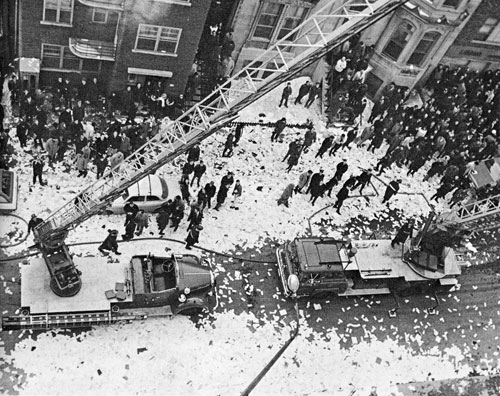
Occupiers were severely beaten with fists, kicks, and riot clubs. By one tally, ninety were arrested, of which just under half were Black, a third were women, and half were born outside Canada. At least half the block-sized ninth floor was a burnt-out ruin, and the computers were wrecked. On the street below lay a large mass of computer cards and other paperwork that had been hurled from the ninth-floor windows. Damage was estimated at more than $2-million (about $15-million in 2019 dollars), the largest-ever loss following on student activism.19
University principal Douglas Clarke declared that police, acting “with full advice of the university,” had been told to avoid “unnecessary use of force.” In fact, it was Clarke who bore responsibility for the disaster. The administration had repeatedly misled and deceived students in order to block a negotiated settlement. At the computer lab, all was quiet. The occupiers’ and his representatives’ proposal for a settlement lay unanswered in his hands. At that moment, Clarke ordered a surprise cop attack that placed university property at risk and caused great human suffering.
Big-business media poured abuse on the student protesters, who faced a tide of denunciation. The arrested occupiers faced lengthy court proceedings. A number of Black students were forced to leave Canada.

A vigorous defense committee gathered support for the arrested; Rosie Douglas toured Canada presenting their case. Douglas ultimately served an 18-month jail term; another leader, Anne Cools, was sentenced to four months. Each later received a form of vindication. Douglas became prime minister of Dominica, his homeland, shortly before his untimely death in 2000. Cools was appointed Senator in Canada’s parliament in 1984.
Despite all denunciation and prosecution, the Sir George Williams occupation put Black Power on the map in Canada, advancing the cause of Black emancipation in this country.
The same was true in the Caribbean islands, particularly in Trinidad and Tobago, where by the Montreal events sparked a Black Power upsurge in 1970.
Yet David Austin’s preface to an ebook edition of Let the N—–s Burn, written in 2016, rightly emphasizes the degree to which the demons of racism still haunt Canadian society.
The need for Black redemption is more urgent than ever, both for people of African descent and for the world at large. Indiscriminate and discriminatory shootings of Blacks in Canada alongside an incarceration rate that has increased by 50% since 2000 suggests that, to borrow from Bob Marley, Black redemption remains elusive and the songs of freedom have yet to be heard; and that, to invert that other Bob’s sixties mantra, the times are not changing.20 •
Sources
- David Austin, “Black Power, the Caribbean, and the Black Radical Tradition in Canada,” The Journal of African American History, 92:4 (Autumn 2007), pp. 516-539.
- David Austin, Fear of a Black Nation: Race, Sex, and Security in Sixties Montreal, Toronto: Between the Lines, 2013.
- David Austin, “Now Is the Time,” 2016 preface to ebook edition of Let the N—–s Burn, Montreal: Black Rose Books.
- LeRoi Butcher, “The Anderson Affair,” in Forsythe (1970), pp. 78-80.
- Dorothy Eber, The Computer Centre Party: Canada Meets Black Power, Montreal: Tundra Books, 1969.
- Dennis Forsythe, ed., Let the N—–s Burn! The Sir George Williams University Affair and its Caribbean Aftermath, Montreal: Black Rose Books, 1971. This book is long out of print and quite rare. A recent ebook edition is available at Black Rose Books.
- Steve Hewitt, Spying 101: The RCMP’s Secret Activities at Canadian Universities, 1917-1997.
- Alfie Roberts, A View for Freedom: Alfie Roberts Speaks on the Caribbean, Cricket, Montreal, and C.L.R. James, Montreal: Alfie Roberts Institute, 2005.
Endnotes
- David Austin, Fear of a Black Nation: Race, Sex, and Security in Sixties Montreal, Toronto: Between the Lines, 2013, pp. 4-5. The words quoted in this passage are taken from Stokely Carmichael and Charles V. Hamilton, Black Power: The Politics of Liberation in America, New York: Vintage Books, 1967, pp. 44-7.
- David Austin, “Black Power, the Caribbean, and the Black Radical Tradition in Canada,” in The Journal of African American History, 92:4 (Autumn 2007), p. 518.
- Austin, “Black Power,” p. 522.
- Austin, “Black Power,” p. 525.
- Dennis Forsythe, “The Black Writers Conference: Days to Remember,” in Forsythe, ed., Let the N—–s burn, Montreal: Black Rose books, 1970, pp. 63.
- Austin, “Black Power,” pp. 523-4.
- Forsythe, pp. 64-5.
- Austin, “Black Power,” p. 522.
- Forsythe, p. 60.
- LeRoy Butcher, “The Congress of Black Writers,” in Forsythe, p. 69.
- Forsythe, p. 66.
- Forsythe, pp. 65-6.
- The Sir George Williams teacher had no connection with Perry Anderson, the noted socialist historian and writer.
- Butcher, “The Anderson Affair,” in Forsythe, pp. 79-82.
- Butcher, “The Anderson Affair,” p. 80.
- Butcher, “The Anderson Affair,” pp. 82-83.
- Austin, Fear of a Black Nation, p. 132.
- Austin, Fear of a Black Nation, pp. 132-5. Butcher’s more detailed account (Forsythe, pp. 93-98) states that more than 25 cops arrived with guns drawn at 4:10 a.m. February 11 and remained in or near the centre for some time awaiting orders from the university administration, before receiving its order to move in.
- Dorothy Eber, The Computer Centre Party: Canada Meets Black Power, Montreal: Tundra Books, 1969.
- David Austin, “Now Is the Time,” preface to ebook edition of Let the N—–s Burn, Montreal: Black Rose Books, 2016.


